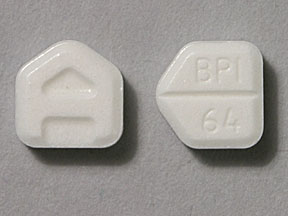Ativan Interactions
There are 407 drugs known to interact with Ativan (lorazepam), along with 12 disease interactions, and 2 alcohol/food interactions. Of the total drug interactions, 31 are major, 345 are moderate, and 31 are minor.
- View all 407 medications that may interact with Ativan
- View Ativan alcohol/food interactions (2)
- View Ativan disease interactions (12)
Most frequently checked interactions
View interaction reports for Ativan (lorazepam) and the medicines listed below.
- Abilify (aripiprazole)
- Adderall (amphetamine / dextroamphetamine)
- albuterol
- Ambien (zolpidem)
- aspirin
- Benadryl (diphenhydramine)
- Cymbalta (duloxetine)
- Flexeril (cyclobenzaprine)
- gabapentin
- ibuprofen
- Lamictal (lamotrigine)
- levothyroxine
- Lexapro (escitalopram)
- lisinopril
- melatonin
- metformin
- omeprazole
- oxycodone
- prednisone
- Prozac (fluoxetine)
- Seroquel (quetiapine)
- Synthroid (levothyroxine)
- tramadol
- trazodone
- Tylenol (acetaminophen)
- Vitamin B12 (cyanocobalamin)
- Vitamin D3 (cholecalciferol)
- Xanax (alprazolam)
- Zofran (ondansetron)
- Zoloft (sertraline)
Ativan alcohol/food interactions
There are 2 alcohol/food interactions with Ativan (lorazepam).
Ativan disease interactions
There are 12 disease interactions with Ativan (lorazepam) which include:
- acute alcohol intoxication
- closed-angle glaucoma
- drug dependence
- renal/liver disease
- respiratory depression
- seizures
- prolonged hypotension
- prematurity
- depression
- obesity
- paradoxical reactions
- upper GI disease
More about Ativan (lorazepam)
- Ativan consumer information
- Compare alternatives
- Pricing & coupons
- Reviews (486)
- Drug images
- Latest FDA alerts (5)
- Side effects
- Dosage information
- Patient tips
- During pregnancy
- Generic availability
- Support group
- Drug class: benzodiazepine anticonvulsants
- Breastfeeding
Related treatment guides
Drug Interaction Classification
| Highly clinically significant. Avoid combinations; the risk of the interaction outweighs the benefit. | |
| Moderately clinically significant. Usually avoid combinations; use it only under special circumstances. | |
| Minimally clinically significant. Minimize risk; assess risk and consider an alternative drug, take steps to circumvent the interaction risk and/or institute a monitoring plan. | |
| No interaction information available. |
See also:
Further information
Always consult your healthcare provider to ensure the information displayed on this page applies to your personal circumstances.


